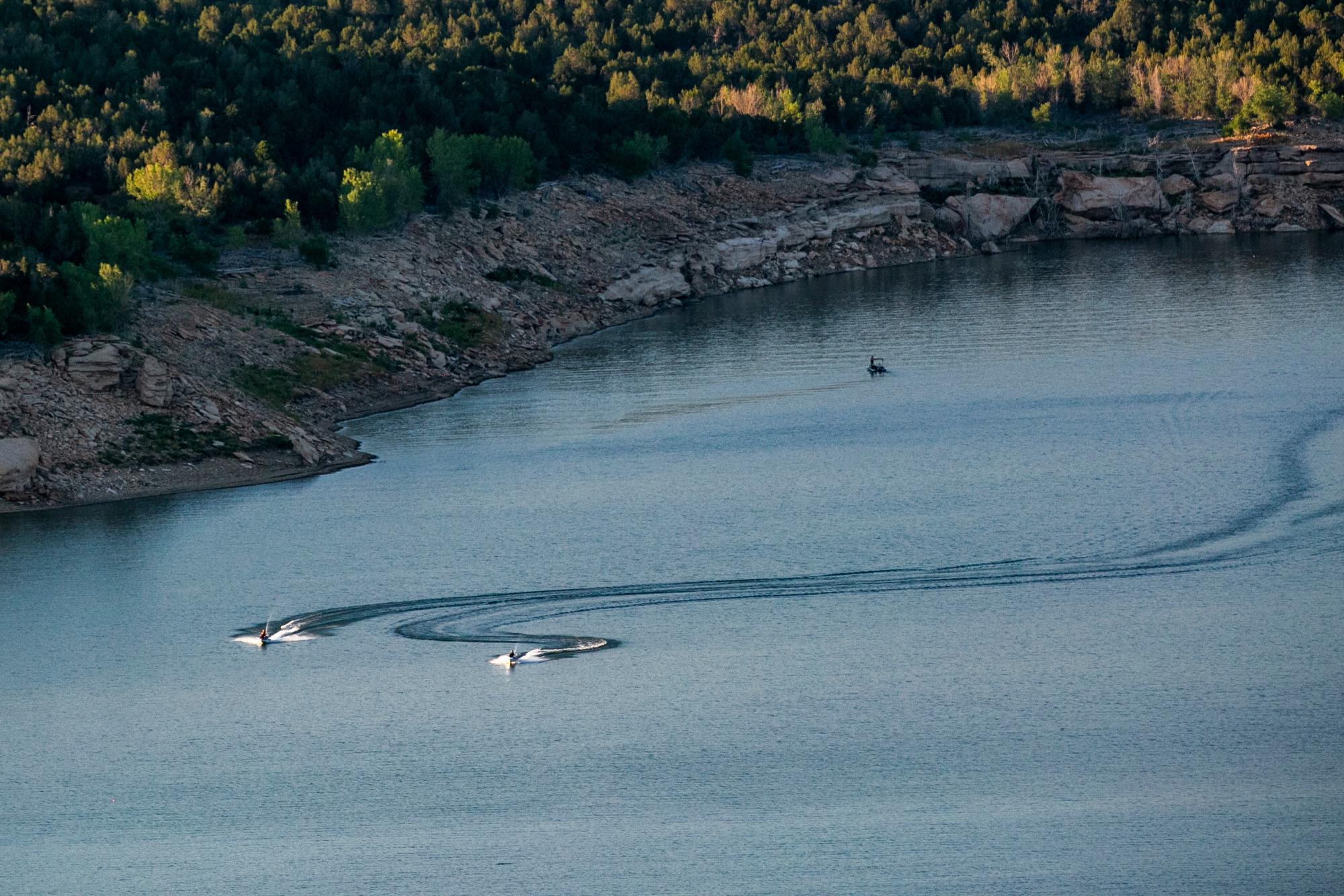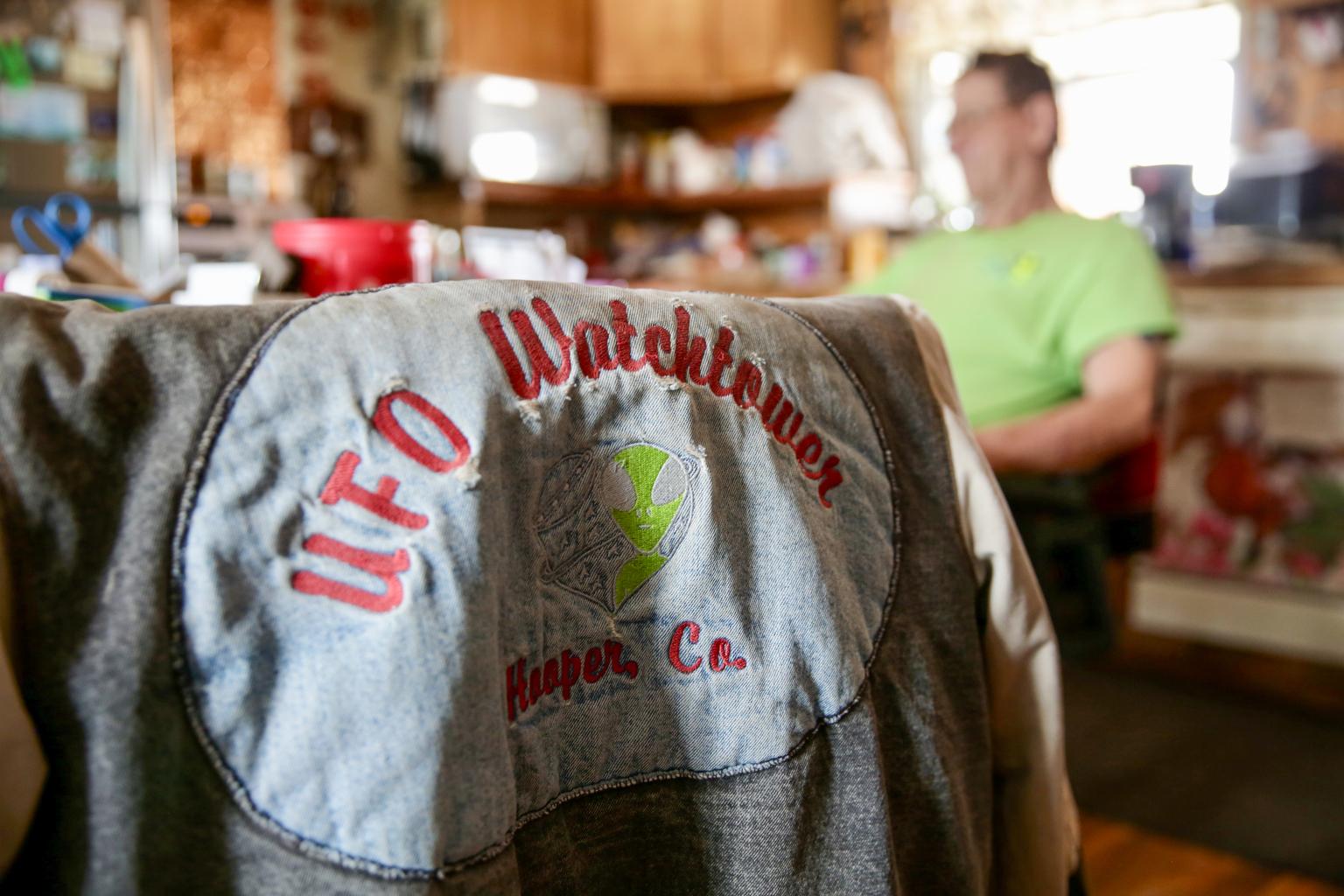
The Dolores River in southwestern Colorado has gushed this spring, flowing in excess of 3,000 cubic feet thanks to strong snowpack, up from about 7 cubic feet. It barely flows most years, since the river has been dammed to serve communities nearby, and climate change has generally reduced the snowmelt coming into Western rivers.
The high water this year means good boating, and it also means people with rights to the water — including on the Ute Mountain Ute reservation — are getting more of their allocation. As recently as 2021, the reservation's farmland got just about 10% of the water it was owed on paper.
The tribe's history of fighting for water access illuminates what Indigenous communities throughout the American southwest face, and highlights the challenges facing everyone who relies on the Colorado River as negotiations into the river's future get underway. The Dolores is a tributary of the Colorado.
Amorina Lee-Martinez completed her PhD on water management around the Dolores River, and spoke with Colorado Matters host Ryan Warner. You can also watch Lee-Martinez's presentation about Ute history and colonial water appropriation through the Crow Canyon Archaeological Center in March 2023.
Editor's note: This interview with Colorado Matters has been edited for length and clarity.
Ryan Warner: Ute tribes used to live all over what's now Colorado. Where were these tribes around the state?
Amorina Lee-Martinez: Ute tribal people lived in bands, which were basically family groups of 10 to 20 people, and lived nomadically all over Colorado and in a landscape that extended into all the states around Colorado, as well. They kind of had homelands in different low country areas and then would travel into the high country in the summertime. And so movement was a really central part of Ute culture.
Warner: In the late 1800s, after the establishment of reservations, Ute people used the Mancos River, in the Four Corners area. What happened when white settlers also wanted to use that water?
Lee-Martinez: The Utes should have had the most senior water rights to the Mancos River. When settlers began to move into that area, after the Ute Mountain Ute Reservation was established, they began to divert the Mancos River upstream from where it would enter into the Ute Mountain Ute Reservation. This was all done without consultation with the Ute people and the reservation. And then in the 1950s, settlers built the Jackson Gulch Reservoir on the Mancos River and further dewatered the Mancos River into the Ute Mountain Ute Reservation.
Warner: What happened after the Ute people lost their access to the Mancos River? How did they get water?
Lee-Martinez: They really didn't get water. The Ute Mountain Ute Reservation had minimal to no good quality water that the tribe could access as soon as the reservation was established, essentially. For about 100 years, water was trucked in to ensure that the tribe had some kind of good quality water they could drink. When you have to truck in water, that's more time and energy and expense to receive water, and less quality of life.
Warner: How did the Ute start using the Dolores River instead, then?
Lee-Martinez: It's important to understand the geography. The Ute Mountain Ute reservation is in the very southwest corner of Colorado, and the Mancos River flows directly through the reservation and into the San Juan River, very close to the Four Corners.
Warner: In other words, it's the river that makes the most sense for the reservation, since it's right there.
Lee-Martinez: Exactly. And the Dolores River never flows into the Ute Mountain Ute Reservation. It flows south from the San Juan Mountains and comes into the town of Dolores, which is about 20 miles north of the reservation, and then it turns north.
So, an important aspect of how the Utes acquired Dolores River water is that on paper, they had the most senior rights to the Mancos River. In negotiations in the 1970s and 1980s, basically they gained recognition from the United States government that they could claim their own water rights — since, historically, the U.S. government did not really acknowledge or make any effort to honor Indigenous water rights. So through all these negotiations, essentially the Ute Mountain Ute tribe agreed to subordinate their rights to the Mancos River, meaning that they would not claim water that would harm the settler users upstream. In exchange for that, they gained a right to the Dolores Project, which includes McPhee Dam, and they gained the funding for the infrastructure to deliver water from the Dolores River to the reservation, as well.
This is an excellent case study of how tribes have had to give up something to get something, as I've heard it said. On paper, they have senior water rights, but in order to get the wet water, they subordinated those senior paper rights.
Warner: So the tribe gave up its senior rights to get junior rights on the Dolores. Does that explain why, in recent years, the Ute Mountain Ute reservation get delivered such small percentages of their allocated water from the Dolores River?
Lee-Martinez: Yes. Because of their really dire need to have running water, the tribe gave up its senior water rights on the Mancos River, essentially. In the way that water's allocated in Colorado and in the West, the most senior water users can utilize all the water that they're allocated. Those that are junior have to wait and see if they'll get all of their water.
Warner: What has happened to the Ute in the span of time between when they were getting water trucked onto the reservation, to when they had access to the Dolores River? What did that access to water mean?
Lee-Martinez: Almost immediately after receiving running water in the late 1980s on the reservation, the tribe was able to start building businesses in a way they never were before. For example, they built a casino within the same year, I believe, and they established a construction company, and they have since built many other construction projects in the area. So businesses were able to be built with water in place.
With that also comes the ability to practice self-determination on a new, stronger level. This includes developing a school on their reservation that was recently opened, educating them in their own culture, in their own context, instead of having to send them north to Cortez, which is quite a trek and there's a lot of culture shock for youth going between Cortez and back onto the reservation. There's also effort to establish a fresh food market on the reservation, which is currently a food desert. This is a common problem for many reservations, being food deserts where you don't have access to high quality fresh food, and also water deserts. So with running water comes economic development and cultural self-determination that was not possible before.
Warner: The same settlement that allowed the Ute Mountain Ute tribe to access the Dolores also promised a reservoir on the Animas River to bring water to the tribes. That project has shrunk because of concerns from taxpayers and environmentalists, so the Ute Mountain Ute and the Southern Ute tribes have not been able to tap the Animas for farming and ranching as they planned. Is that a pattern you see?
Lee-Martinez: This is certainly a pattern that has repeated itself in the Colorado River basin. The tribes keep getting the short end of the stick for multiple reasons.
Warner: Now we are in a relatively wet year. But the longer trend with climate change is that we're going to see hotter and drier weather. So, what is the future for Indigenous tribes?
Lee-Martinez: What I see with tribes, especially with the Ute Mountain Ute tribe, is that they are continuously requesting that they be present and incorporated and included in the discussions for the future of water management, and not be treated as an afterthought or excluded from those conversations — as they have historically.
CPR's Tom Hesse contributed reporting.









